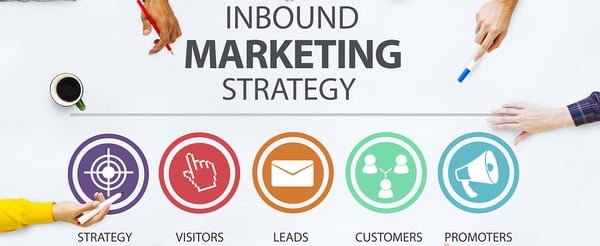B2B Marketers and the Cost Center Reference
It can seem that B2B marketing doesn't get the accolades that are necessarily due. Senior management can fall into the mindset of viewing B2B...
.png)
Modern consumers are savvy, informed, and empowered. There’s a world of knowledge at their fingertips they can click on and use to educate themselves.
Because of this, B2B buyers are no longer receptive to overtly pitchy sales methods. Instead, they’re looking for guidance and useful information they can immediately put into play to solve their problems.
That’s where lean inbound sales can help. Inbound sales is a personalized, helpful, modern sales methodology. Inbound salespeople focus on their prospect's pain points, act as a trusted consultant, and adapt their sales process to the modern buyer journey.
Whether you’re new to inbound lean sales or just looking to tighten up your approach, read on. We’ve broken down the lean sales concept into four digestible principles below.
Key Takeaways
Unlike the outdated traditional sales model, inbound lean sales is personal and customer-centric. When we use the lean sales model, we adopt a solution-selling rather than a product-selling approach.
Inbound sales is a personalized, helpful, modern sales methodology. Inbound salespeople focus on their prospect's pain points, act as a trusted consultant, and adapt their sales process to the buyer journey.
To understand the difference between inbound sales and older outbound sales methods:
There are several lean sales techniques, but we’ll focus on the four most important ones here.
The traditional sales model is seller-centric. In other words, it’s built around the sellers’ wants and needs (closing the deal). Unfortunately, this outdated approach doesn’t work anymore, and here’s why.
Modern consumers are armed with information. It’s only a click away, and you better believe that prospects seek it out long before you find them. These days, customers want your expertise and guidance. What they don’t want is to be pitched, demoed, or sold to.
Lean salespeople know that to even inch towards a sale, they must add value to the information consumers can find on their own. So, before anything, understand your customers.
To support consumers, you must first determine their wants and needs. One way to gain this insight is by monitoring your website, social media, and email communications.
The answers to these questions will tell you a lot about what your customers and prospects value. It will also reveal where consumers are at in the buying journey.
As you identify where your prospects are in the buyer’s journey, you’ll begin to separate active from passive consumers. Focus your energy on those who are active - in other words, those who are in the “awareness” stage of the journey.
Before identifying prospects, you’ll need to determine those you can help and those you can’t. And once you make that determination, you’ll be able to prioritize leads.
No one likes cold calls. Salespeople and consumers both dread them. Beyond dread, here’s another reason to leave cold calls in the dust: They don’t work.
Modern consumers do not rely on salespeople to learn about products and services. Thanks to the internet, this information is only a click away. If you’re only in the early stages of forging relationships with prospects, skip the sales pitch and instead personalize your communications.
“Aware” prospects are only in the beginning stages of the buying process. So meet them where they are. Rather than pitch, offer a free consultation or a downloadable guide that addresses the consumer’s specific pain points.
If you found these four lean sales principles helpful and are looking for additional ways to trim waste, reduce inefficiency, and connect with consumers, schedule a free consultation with an Inbound 281 Manufacturing Marketing Consultant.

It can seem that B2B marketing doesn't get the accolades that are necessarily due. Senior management can fall into the mindset of viewing B2B...

Though B2B consumers continue to indicate a preference for inbound marketing over more traditional marketing methods, some B2B companies have been...

Understanding B2B content marketing trends is key to staying competitive. As the industry evolves, marketers are faced with rapid advancements like...